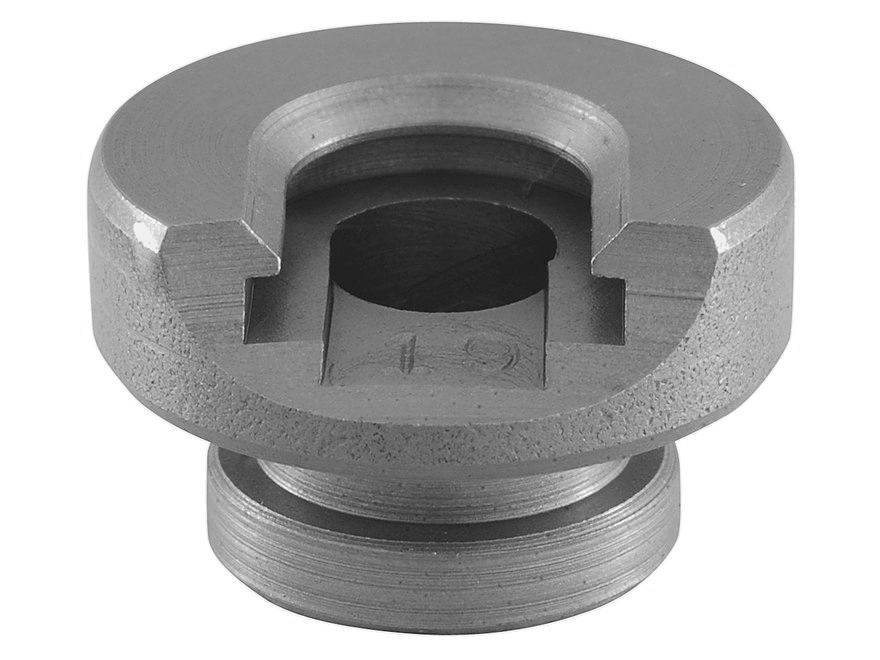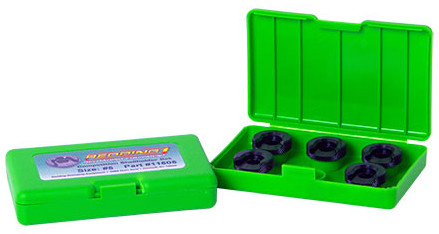There are a few tricks and treats, and traps, in reloading press designs and associated pieces-parts. Shellholder first. KEEP READING

Glen Zediker
Last couple of editions started a “press primer,” and this one should finish it off, at least for now.
Shell Holder Options
A correctly dimensioned and well machined shell holder is absolutely necessary.
Small differences in individual shellholders, and certainly in different brands of shellholders, mean that a shellholder change makes it necessary to check case sizing and bullet seating results again. Adjustment will likely be required. If a shellholder is a little bit thicker or thinner such as will influence the cartridge case “height,” then that’s transferred to the end result as measured in, for instances, cartridge case headspace and bullet seating depth.
That is exploited by some who produce shellholders with varying heights. These come in a set and have incremental differences that allow you to move a case up or down by swapping the shellholder. If you load for different rifles using the same die, and if these rifles all have a different ideal cartridge case headspace, for instance, then there can be less compromise without having to use a different sizing die.

Not all shell holders are interchangeable! They’re supposed to be, generally, but I’ve purchased different brands for use in differently branded presses, and they won’t fit.
Shellholder Tricks
Speaking of fit, check over a new shellholder for burrs and make sure it fits fully and freely into its slot in the press ram. And, speaking of its slot in the press ram, I have long been a believer in getting rid of the “spring clip” virually all presses use to secure the shellholder in place. The spring clip sits the shellholder askew atop the ram.
This clip can be removed. I use an o-ring as can be found at a real hardware store to fit into the outside slot formerly occupied by the clip. The elastic o-ring keeps the shellholder from coming slap out, but also takes a little (to a lot) of getting used to because the shellholder is free to spin and shift. It no longer snaps satisfyingly and firmly into place.

This arrangement lets the shellholder fit flat-flush against the ram and, very important, allows some “wiggle room” to let the shellholder float so the cartridge case can seek its own center as it enters the die.
I am absolutely convinced that a floating shellholder is a big help toward attaining concentricity in a round.
All mating parts surfaces have to have a tolerance. Lower (closer gaps) is better, but it can’t get too low or the dang parts won’t fit together. The way I see it, the more room for movement the bigger trick it is to get everything in alignment, if we want to lock it all in-line. Shellholders are fairly loose all around: the shellholder has to fit into the press ram slot and then the case has to fit into the shellholder and these fits are fairly free. Attempts to lock a shellholder in place, frankly, are contrary to best alignment, with maybe one exception.
On the other end of this, and this qualifies as a press “trick,” Forster has its own take on shellholder design. The Co-Ax shellholder uses what amounts to clamping jaws that are engineered to take up the slack in each individual case and lock it in dead alignment with the press ram. I’ve used Forster long enough and made enough gage checks, and shot enough high-x cleans with the resulting rounds produced on this machine, to tell you that it it, indeed, works. Years ago I tried an aftermarket add-on version of this concept produced by Quietics, makers of the original “inertia” bullet puller. It’s still available. Like the Forster, the same setting will work with a variety of cartridge sizes and that was the main draw to this “universal” shellholder.

Keep the shellholder and its slot clean. As often said, running a separate decapping station keeps the majority of gritty gunk off the main press parts.
The preceding is a adapted from information contained in from Glen’s books Top-Grade Ammo and Handloading For Competition. Available HERE at Midsouth Shooters Supply. Visit ZedikerPublishing.com for more information on the book itself, and also free article downloads.









